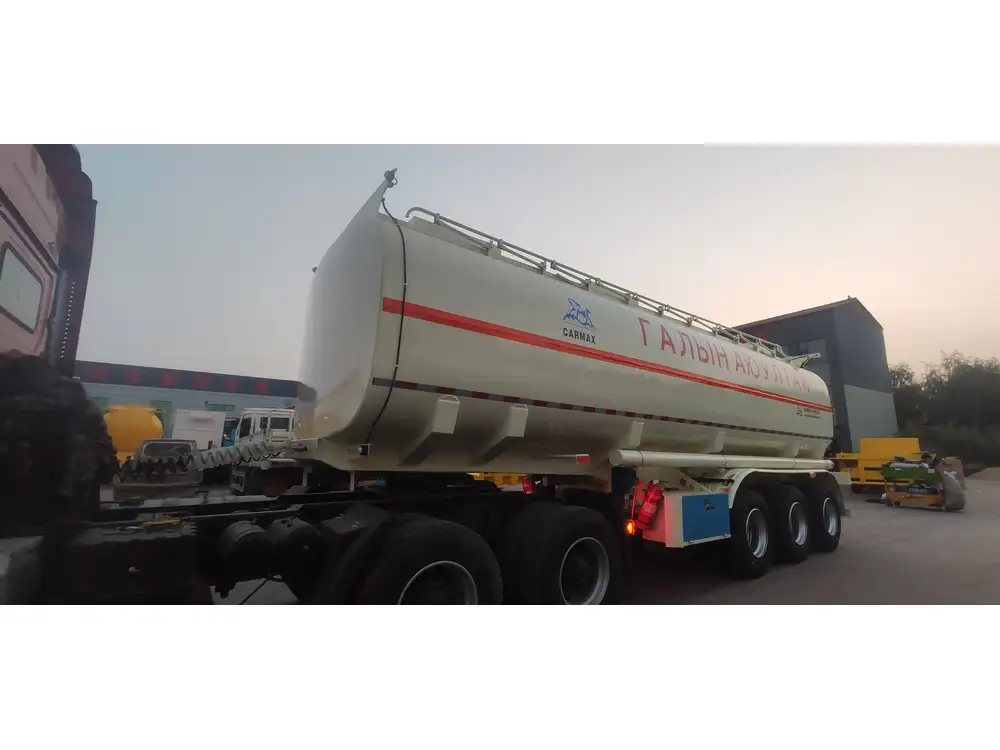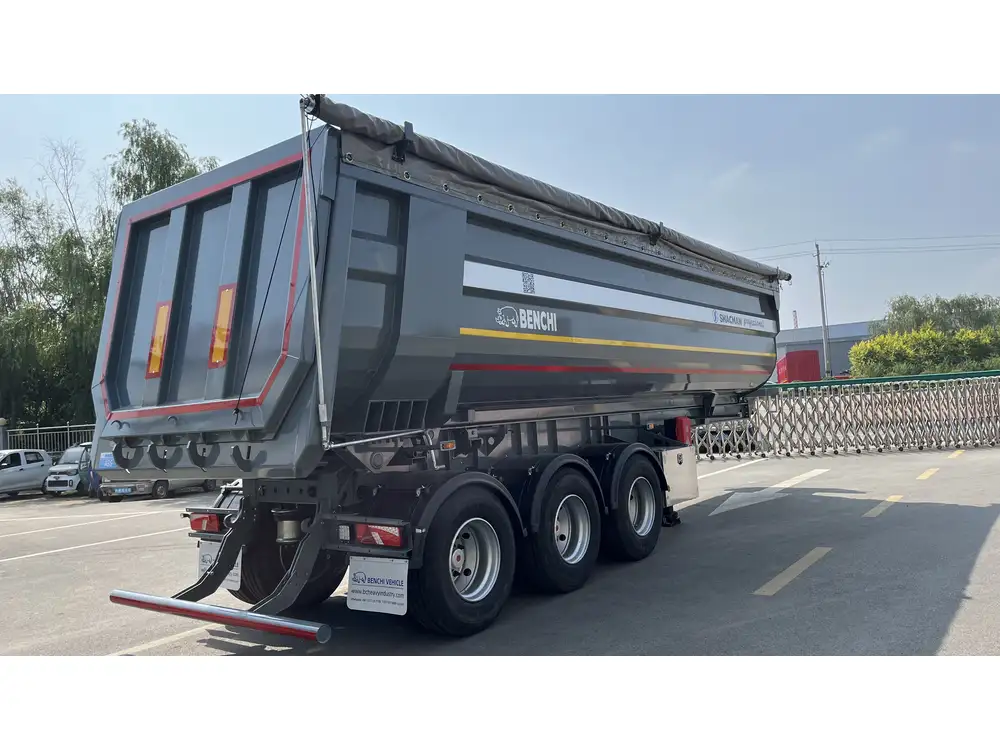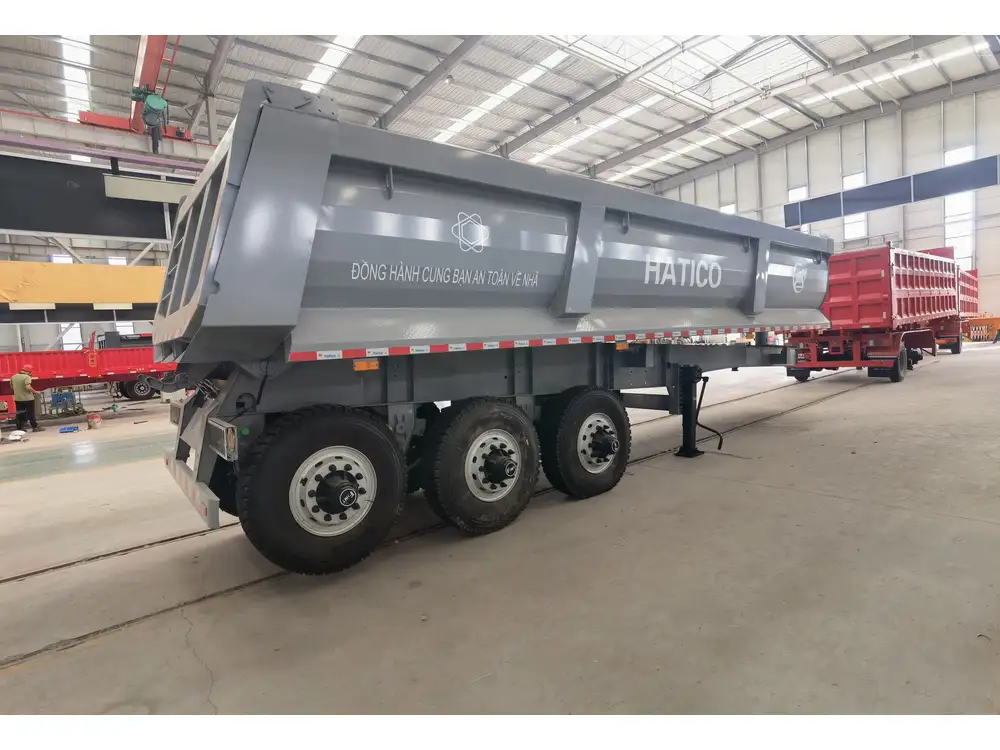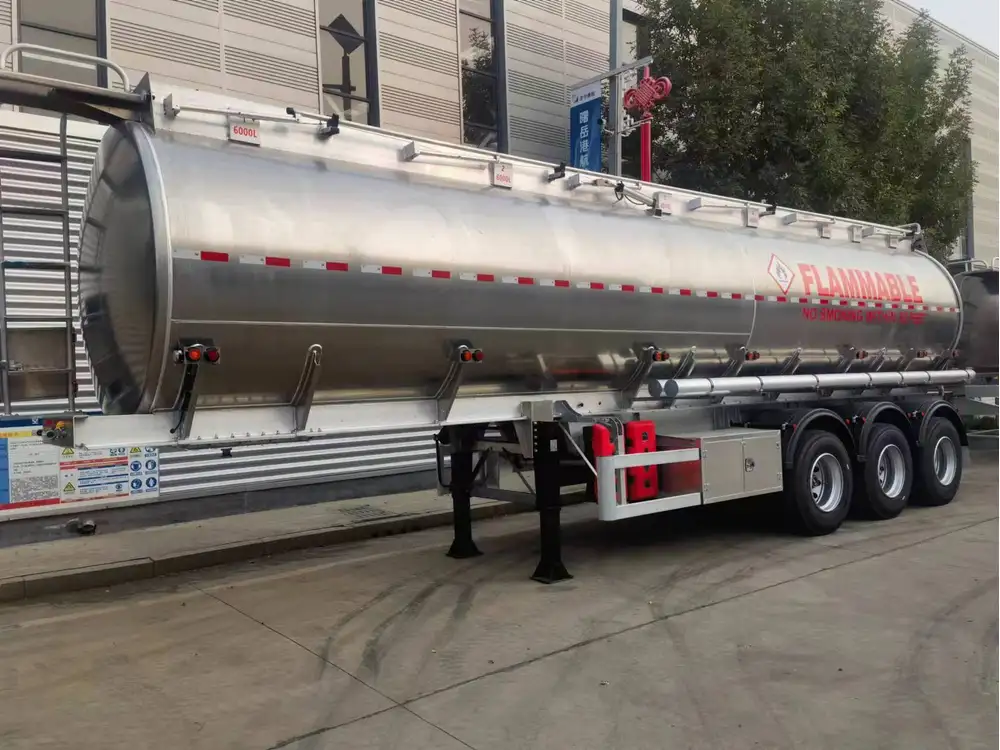When it comes to semi-trailers and their efficiency, one of the most pressing questions for truck operators and logistics companies alike is, “How much fuel does a semi hold?” Understanding the fuel capacity of semi-trucks is not just about logistics—it’s also pivotal for optimizing routes, managing costs, and maximizing productivity. In this article, we delve into the intricacies of semi-trailer fuel capacity, factors influencing it, its implications on operations, and tips for maximizing efficiency.
Understanding Semi-Trailer Fuel Tanks
Fuel Tank Capacity of Common Semi-Trucks
The fuel capacity of semi-trucks varies significantly depending on the model, customization, and intended usage. Typically, most semi-truck fuel tanks can hold anywhere between 100 to 300 gallons of fuel in total. Here’s a simplified breakdown:
| Type of Semi-Truck | Average Fuel Tank Capacity |
|---|---|
| Light-Duty Models | 100 – 150 gallons |
| Medium-Duty Models | 150 – 200 gallons |
| Heavy-Duty Models | 200 – 300 gallons |

Standard Configurations
Most heavy-duty trucks usually come equipped with one or two fuel tanks. The single tank configuration typically holds around 100 to 150 gallons, while dual tanks can accumulate a capacity ranging from 200 to 300 gallons.
Examples of Popular Models:
- Freightliner Cascadia: Offers a range with a single tank capacity of about 125 gallons, with dual tank setups reaching up to 300 gallons.
- Peterbilt Model 579: Commonly has fuel tanks averaging 150 to 200 gallons.
- Kenworth T680: Can be configured for up to 300 gallons with options for additional capacities based on customer preference.
Variations Based on Usage
The choice of fuel capacity is often influenced by the type of freight being transported, the distance driven regularly, and the terrain experienced. For instance, regional haulers might opt for smaller fuel tanks that are easier to manage, while long-haul trucking companies generally require larger tanks to minimize refueling stops.

Factors Influencing Fuel Tank Capacity
Customization Options
In today’s trucking industry, customization is crucial. Companies can specify their fuel tank sizes as per operational demands. Additional options include:
- Aluminum vs. Steel Tanks: Aluminum tanks are lighter, enabling better fuel efficiency, while steel tanks might be selected for higher durability.
- Shape and Design: Aerodynamic designs can influence the overall weight of the truck, affecting fuel economy.
- Weight Considerations: Regulations such as GVWR (Gross Vehicle Weight Rating) restrict the truck’s total weight, including the fuel.
Regulations and Compliance
It’s important to remain updated on regulations governing the size of fuel tanks. The Department of Transportation (DOT) and the Environmental Protection Agency (EPA) impose legal restrictions and considerations regarding the size and type of fuel systems installed in semi-trucks.

Environmental Considerations
The trucking industry is increasingly heading towards sustainability. Some newer models feature fuel-efficient designs or alternative fueling systems (like CNG), necessitating a re-evaluation of tank sizes.
Implications of Fuel Capacity on Operations
Route Planning and Efficiency
An understanding of fuel capacity is crucial for effective route planning. With larger fuel tanks, truck operators are less likely to stop frequently for refueling, thus allowing for longer hauls without interruption. This can lead to:
- Increased Productivity: Fewer stops mean that cargo can be delivered on time.
- Cost Management: Fuel cost fluctuations can be better managed with longer intervals between refueling.

Weight Management
Fuel weight can significantly impact a semi-truck’s payload capacity. Diesel fuel weighs approximately 7.1 pounds per gallon. Therefore, a fuel tank holding 200 gallons adds roughly 1,420 pounds to the truck’s overall weight, influencing:
- Payload: Understanding how much fuel is onboard directly correlates with the weight of the cargo that can be carried.
- Safety: A well-balanced truck minimizes the risk of accidents caused by overloading.
Maintenance Schedules
Proper fuel management goes hand in hand with maintenance. Trucks with larger tanks may require less frequent inspections for fuel system issues, potentially reducing downtime.
Maximizing Semi-Trailer Fuel Efficiency

Driving Techniques
Adopting best practices in driving can greatly influence fuel consumption. Consider the following strategies:
- Smooth Acceleration and Deceleration: Avoiding rapid changes can conserve fuel.
- Speed Management: Keeping speed within the range of 55 to 65 mph generally maximizes fuel efficiency.
- Cruise Control: Using cruise control on flat highways can maintain optimal speed and fuel usage.
Maintaining the Truck
Regular maintenance ensures optimal performance. Key areas to focus on include:
- Engine Tuning: Ensuring the engine is running efficiently can enhance fuel economy.
- Tire Pressure: Properly inflated tires reduce rolling resistance, leading to better fuel mileage.
- Aerodynamics: Installing features such as side skirts or rear fairings can improve airflow and reduce drag.
Choosing the Right Routes
Utilizing advanced route management systems can help identify paths that are fuel efficient. By analyzing traffic patterns, terrain changes, and road conditions, logistics companies can reduce fuel consumption, which is not only cost-effective but environmentally friendly.

Conclusion: Fuel Capacity and Efficiency
The fuel capacity of a semi-trailer is central to its functionality and performance. Understanding how much fuel a semi holds—and the factors that influence this capacity—not only aids truck operators in strategic planning but serves as a cornerstone for operational efficiency. By implementing proper driving techniques and maintenance practices, logistics companies can maximize their resources and maintain a competitive edge.
In sum, whether you are a fleet owner, truck operator, or transportation logistics employee, recognizing the nuances of fuel capacity translates into enhanced productivity and reduced operational costs. This understanding plays a pivotal role in fuel management and ultimately leads to sustainable practices within the trucking industry.
By educating oneself and adapting to the complexities surrounding fuel management, users can optimize their operations while ensuring efficiency in every haul.



